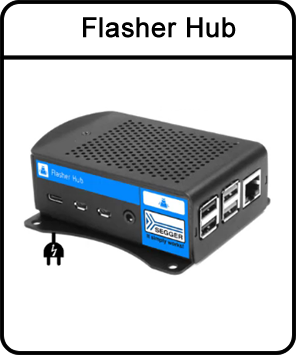Utilizziamo i cookie per rendere migliore la tua esperienza di navigazione. Per rispettare la nuova direttiva sulla privacy, è necessario chiedere il tuo consenso per impostare i cookie. Per saperne di più.
Software
All software is included free of charge. It comes with the flash loaders for all supported devices.
For the Flasher Hub, the Flasher Software and Documentation Package is available:
Download
Updates
Future software and firmware updates as well as any new flash loaders for target devices that will be added, are also free of charge.
- No licensing costs, even for newly added devices.
- No hidden costs.
- No future costs.
Cross-platform
As a cross-platform solution, Flasher Hub comes with the application software for Linux, macOS and Windows. Software and firmware updates are included. Similarly, use on all currently supported target devices, and any that will be added, is also included.
Gang programming
The Flasher Hub controls multiple Flasher Compacts. Each Flasher can be configured individually to program different targets with different target firmware. Whether it’s the number of channels, type of flash device, firmware image, programming interface or command interface, the Flasher Hub can manage them all.
Universal target support
The Flasher Hub supports all flash devices and programming interfaces supported by the Flasher to which it is connected. By using Flasher Compact as modules, the Flasher Hub takes advantage of the extensive list of supported devices and target interfaces, plus the ultra-fast programming speed and reliability, of these almost-anything-programmers.
Supported devices
SEGGER Flashers support a wide range of CPU cores and an even wider range of different devices, such as SPI-Flash devices.
This includes support for tens of thousands of devices in hundreds of device families with billions of devices programmed.
Please note that a device may still be supported even if it is not on the list. Device not listed? Please don’t hesitate to contact us.
Flexible control and monitoring
The Flasher Hub is easy to set up and operate using SEGGER software tools. It can be operated in either stand-alone or PC-based programming mode. In stand-alone mode it can be operated via remote control (USB, UART, Ethernet) or by the push of a button or TTL triggers.
Serial number assignment
Many modern devices require some pieces of unique information.
The Flasher Hub allows the programming of data that differs amongst other otherwise identical units. Typical examples are things like serial numbers, ethernet hardware addresses (MAC), and digital signatures, and license keys that enable/disable product features. All these options can be adapted from device to device by applying patch data to the original firmware.
Built-in web server
The Flasher Hub offers options to check status information remotely and to configure each device individually.
Remote monitoring
The Flasher Hub comes with SEGGER's built-in web server. It is designed to present important device and current operation data for a quick overview and, additionally,to check the status of the programmer, providing information about:
- Installed firmware version
- Hardware version
- Power consumption
- IP configuration
- Network load
- Current operation and status
- Programming interface in use
This may be important for fast troubleshooting through code verification, for instance, as it is when executing a cyclic redundancy check (CRC) that helps to detect errors during data transmission or storage.
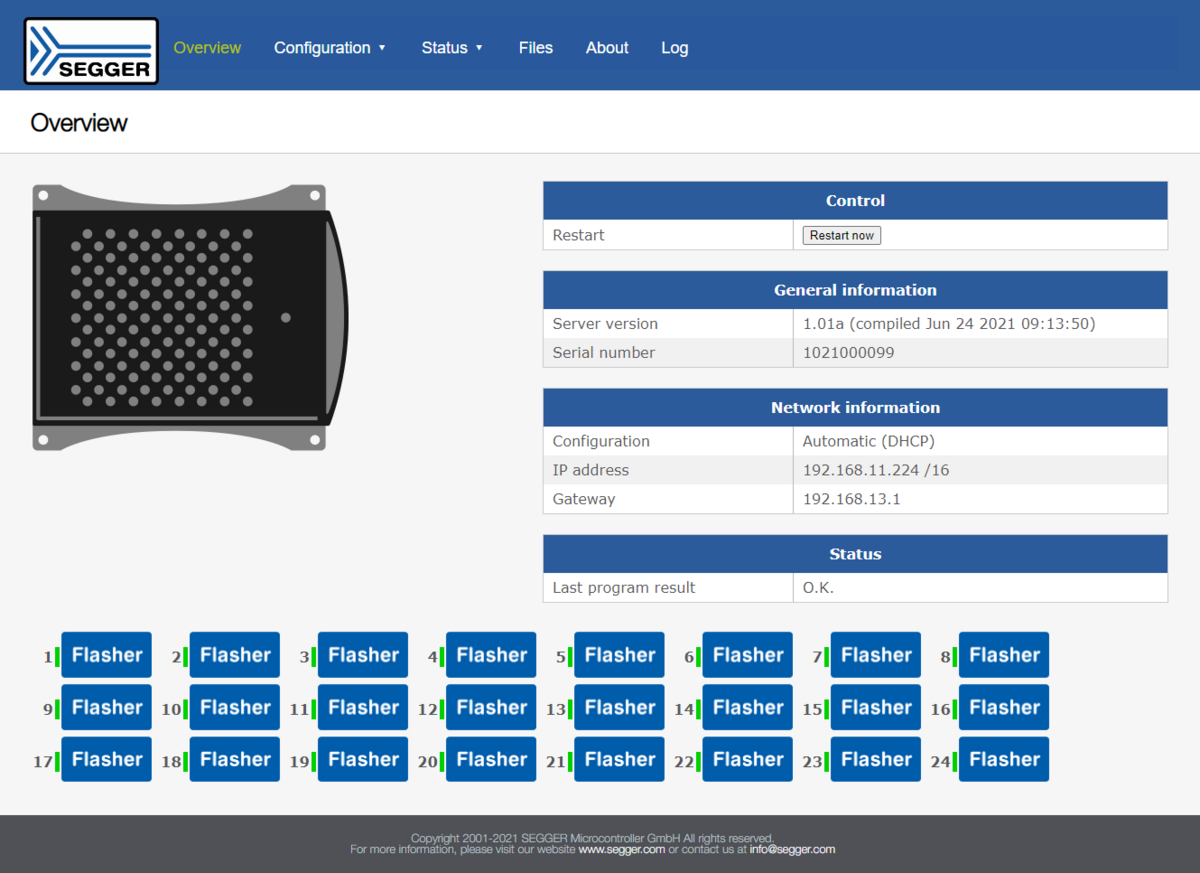
Configuration
If needed, the built-in web server programmer settings can be checked and adjusted. These could, for example, be parameters like:
- Subnet mask
- Gateway
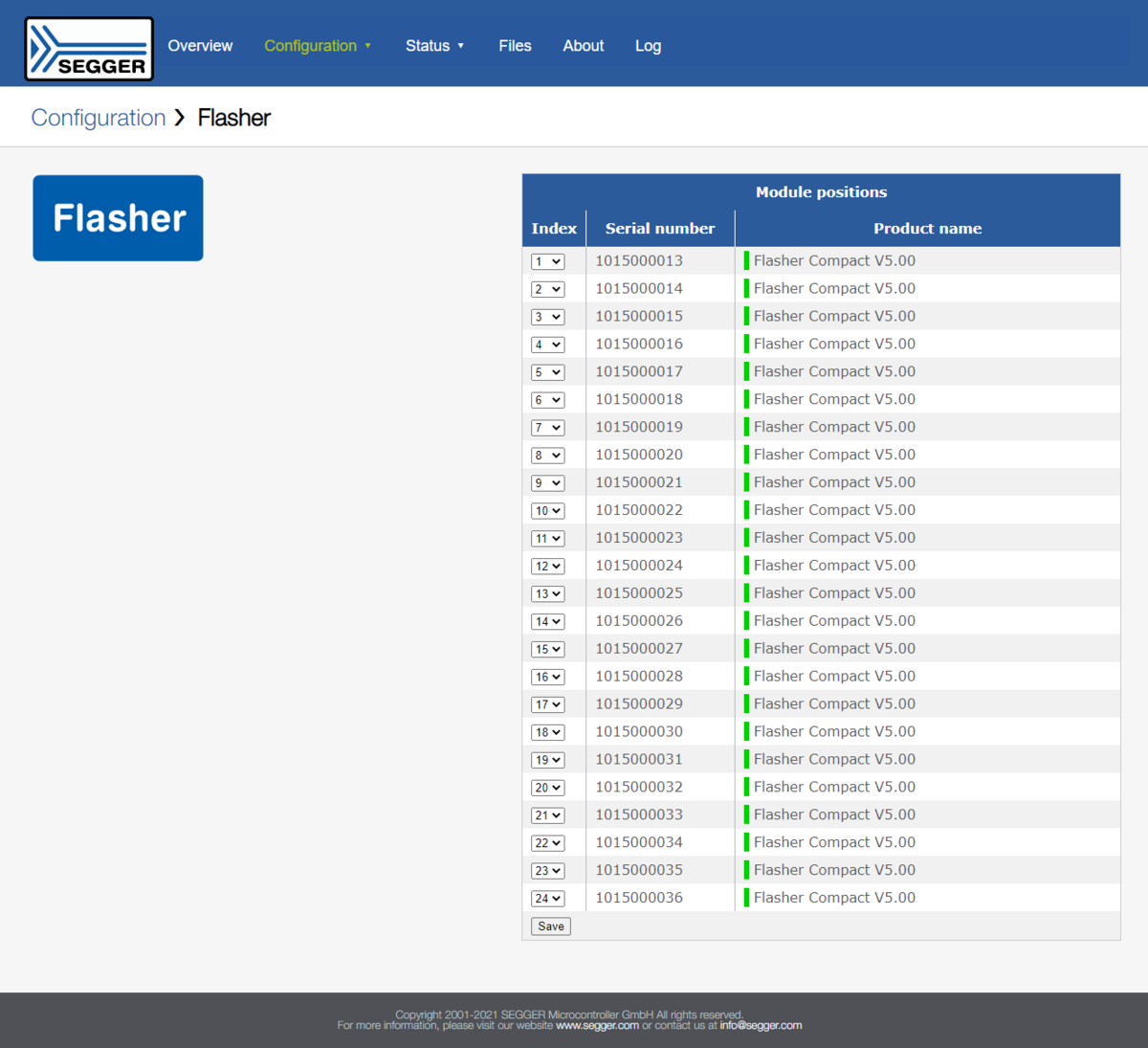
Built-in FTP server
The Flasher Hub also includes the built-in FTP server, to upload firmware and configuration or download log files.
Remote file update
Using the emFTP server enables easy upload of configuration files and firmware images. By connecting to the emFTP server using an FTP client of choice, files can be transferred between client and Flasher.
Having access to the Flasher configuration via FTP enables configuration of multiple Flashers from a central production control server. This interface also can be used to make the production line part of a CI/CD system to push stable releases into the current production.
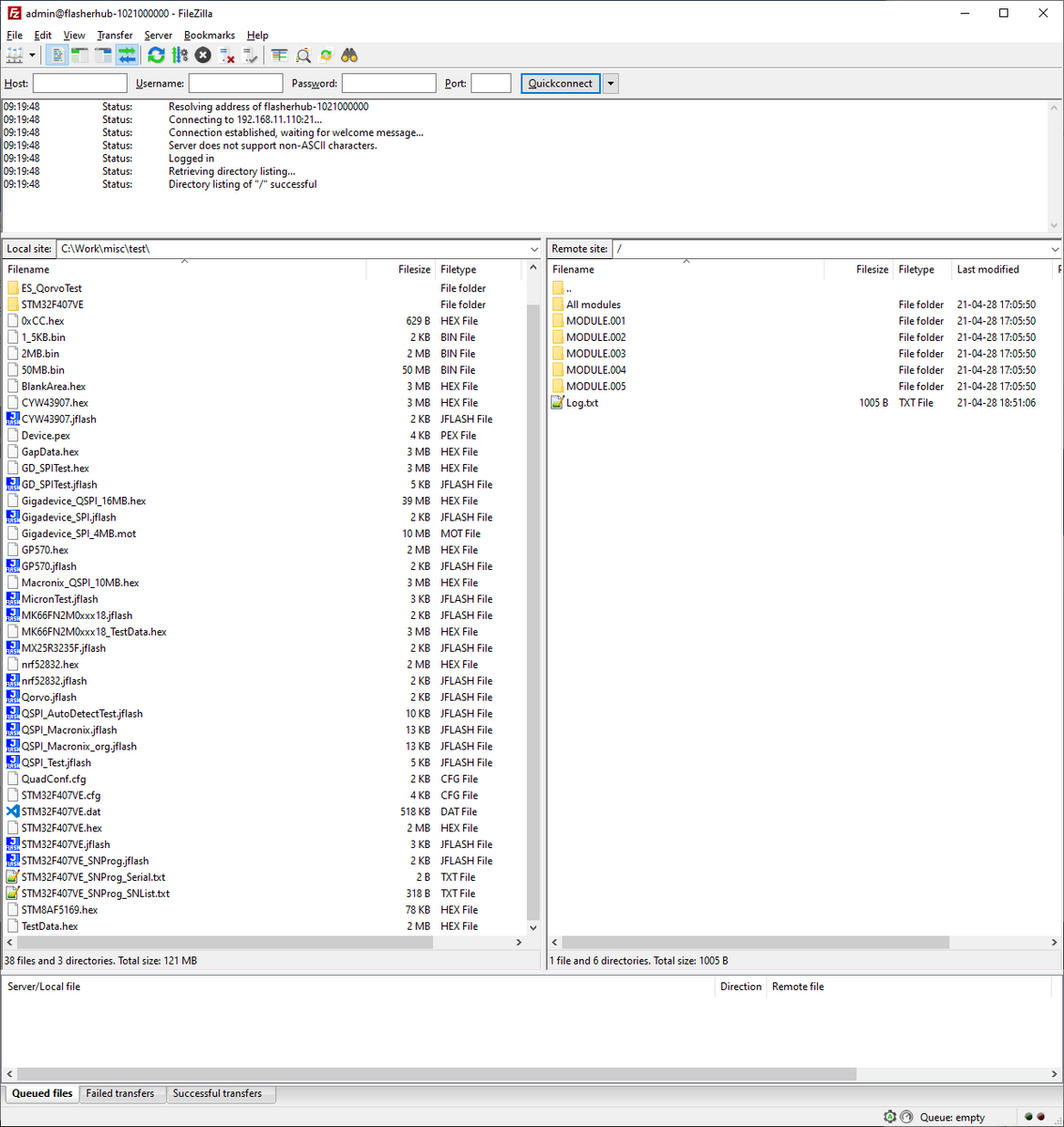
Log file
Analyzing the reliability of the production line is an important task, when it comes to increasing the production frequency. This purpose is supported by the built-in FTP server, which lets users check the history of past programming cycles via log file download. Each entry provides the following information:
- Result (success/failure)
- Duration
- Serial number (if programmed)
For failed programming cycles, the log file provides additional information for quick troubleshooting (e.g. failed to open Flasher config file).
Use Case
In-system programming for complex manufacturing lines
In addition to supporting programming unique serial numbers and patch data. It also allows updating and monitoring from a nearby production control office. This means the programming process is closely connected to testing facilities, such as ATE (Automatic Test Equipment) and similar devices. In practice, this means:
With SEGGER’s Flasher Hub up to 24 Flasher Compacts can be connected and controlled simultaneously, to create a single, powerful gang programmer for efficient high-speed parallel programming.
- Fast & easy data transfer from development to production
- Easy monitoring & updating from a nearby location
In-system programming processes in mass production also come with a ready-to-use communication channel and TELNET interface. These can be used to control its operation. Additionally, built-in web/FTP servers allow updates and monitoring.
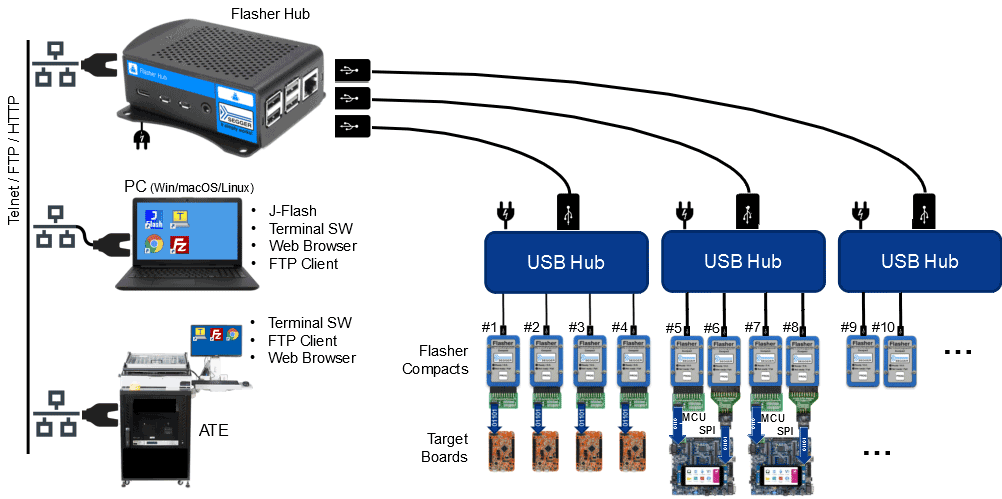
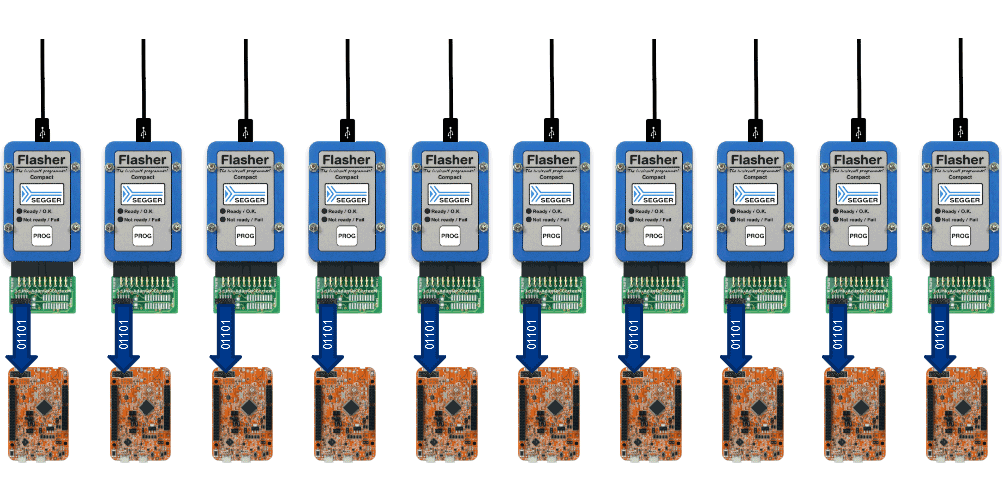
| Power supply | USB C-powered, max. 3.0 A |
|---|---|
| USB Flasher interface | USB3.0, USB2.0 |
| Host interfaces | FTP, TELNET |
| Operating temperature | + 0 °C ... + 50 °C |
| Storage temperature | - 20 °C ... + 65 °C |
| Relative humidity (non-condensing) | < 90 % rH |
| Size (without cables) | 60 mm x 32 mm x 95 mm (without mounting brackets) |
| Weight (without cables) | 132 g |
- In-system programmer (ISP)
- Scalable: Up to 24 individual parallel programming channels with their own circuit memory
- Built-in web & FTP server for easy setup
- Cross platform: Includes setup and control software for Linux, macOS, and Windows
- No license required. No hidden costs. No future costs.
- Future proof: Software, firmware updates, and new flash loaders, are free of charge.
Guarda il Video
Segger Flasher Hub - High-volume gang programming at maximum speed
Flasher Hub — Intro | 3:15 min
Non esitare a metterti in contatto con i nostri esperti.
Basta chiedere qui



